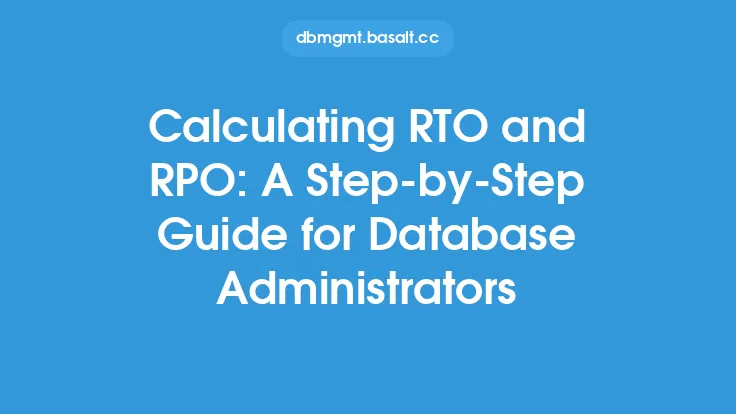Database backup is a critical aspect of data management, and it involves creating copies of data to prevent loss in case of failures, corruption, or other disasters. There are several types of database backups, each with its own strengths and weaknesses, and understanding these types is essential for developing an effective database backup strategy. In this article, we will delve into the different types of database backups, their applications, and the benefits they offer.
Introduction to Database Backup Types
Database backups can be categorized into several types based on the method used to create the backup, the frequency of the backup, and the level of granularity. The main types of database backups include full backups, incremental backups, differential backups, transaction log backups, and partial backups. Each type of backup serves a specific purpose and is suited for different scenarios.
Full Backups
A full backup, also known as a complete backup, involves creating a copy of the entire database. This type of backup includes all data, indexes, and system files, and it is typically performed during periods of low activity or when the database is offline. Full backups are the most comprehensive type of backup and provide a complete restore point for the database. However, they can be time-consuming and resource-intensive, especially for large databases.
Incremental Backups
Incremental backups involve creating a copy of the changes made to the database since the last full or incremental backup. This type of backup is typically performed at regular intervals, such as daily or weekly, and it provides a restore point for the database that is more current than the last full backup. Incremental backups are faster and more efficient than full backups, but they require a full backup to be restored first.
Differential Backups
Differential backups involve creating a copy of the changes made to the database since the last full backup. This type of backup is similar to incremental backups, but it includes all changes made since the last full backup, rather than just the changes made since the last incremental backup. Differential backups are useful for databases that have a high volume of transactions, as they provide a more comprehensive restore point than incremental backups.
Transaction Log Backups
Transaction log backups involve creating a copy of the transaction log file, which contains a record of all changes made to the database. This type of backup is typically performed at regular intervals, such as every 15 minutes, and it provides a restore point for the database that is more current than the last full or incremental backup. Transaction log backups are useful for databases that require high availability and minimal data loss.
Partial Backups
Partial backups involve creating a copy of a subset of the database, such as a specific table or schema. This type of backup is useful for databases that have a large amount of data that is not critical to the business, or for databases that have a high volume of transactions and require frequent backups. Partial backups can be performed more frequently than full backups, and they can help reduce the storage requirements for backups.
Application of Database Backup Types
The choice of database backup type depends on several factors, including the size and complexity of the database, the frequency of transactions, and the level of data protection required. Full backups are suitable for small to medium-sized databases that have a low volume of transactions, while incremental and differential backups are suitable for larger databases that have a high volume of transactions. Transaction log backups are suitable for databases that require high availability and minimal data loss, while partial backups are suitable for databases that have a large amount of non-critical data.
Benefits of Database Backup Types
Each type of database backup offers several benefits, including improved data protection, reduced downtime, and increased flexibility. Full backups provide a complete restore point for the database, while incremental and differential backups provide a more current restore point. Transaction log backups provide a high level of data protection and minimal data loss, while partial backups provide a more efficient use of storage resources.
Best Practices for Database Backup Types
To get the most out of database backups, it is essential to follow best practices, such as scheduling backups during periods of low activity, testing backups regularly, and storing backups in a secure location. It is also essential to consider the recovery time objective (RTO) and recovery point objective (RPO) when choosing a database backup type. The RTO refers to the amount of time it takes to restore the database, while the RPO refers to the amount of data that can be lost in case of a failure.
Conclusion
In conclusion, database backups are a critical aspect of data management, and understanding the different types of database backups is essential for developing an effective database backup strategy. Each type of backup has its own strengths and weaknesses, and the choice of backup type depends on several factors, including the size and complexity of the database, the frequency of transactions, and the level of data protection required. By following best practices and choosing the right database backup type, organizations can improve data protection, reduce downtime, and increase flexibility.





